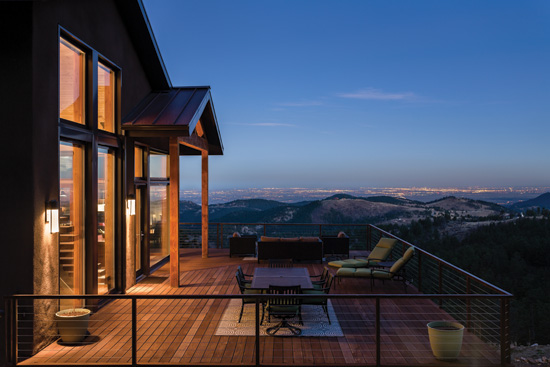European Windows Boost U.S. Performance and Design
Learning Objectives:
- Describe the features and measures of high-performance European windows including the types of windows available for energy-efficient, sustainable buildings.
- Explain how glass selection and gas fills impact window and building performance including heat gain, light transmission, and energy efficiency.
- Discuss how window sizing and installation detailing can boost window performance significantly beyond the NFRC ratings.
- List the areas of focus for Passive House standards, and the ways that European windows may help meet the rigorous standards.
Credits:
Architecture is about making form, right? Not so fast, says Peter Zumthor, the Swiss gold-medal architect known best for his thermal bath in Vals. In London a few years ago, Zumthor said, “Architecture is not about form, it is about many other things: the light and the use, and the structure, and the shadow, the smell and so on.”
Le Corbusier said it in even stronger terms: “Architecture is the masterly, correct and magnificent play of masses brought together in light.”
To bring natural light indoors to illuminate massing, materials, and other features requires openings and fenestration in the right proportion and arrangement. More than that, one needs windows that achieve the same levels of craft and quality as the building assemblies custom-designed by the architectural team. “Architecture is made of memory,” says California architect and author Anthony Lawlor. “The slope of a roof, the shape of a window, and the color of a door contain the record of the minds that conceived them and the hands that crafted them.”
Appreciation of craft and demand for better performance have led to the importing and fabrication of European window technology across a growing area of the United States. Unlike European automobiles (or even beer) where one might argue the product's prestige and premium cost overshadow any real performance advantages, the trend toward using more European windows is 100 percent performance driven. Prestige tends to be subsidiary to the quest for real improvements in occupant comfort, operability, energy savings, and appearance.
Some architects use other words to describe the European fenestration products. Some say craftsman-quality windows or high-performance products or, increasingly, one hears Passive House windows in a reference to the demanding enclosure specifications required to achieve that designation's requirements for insulation, air infiltration, and overall thermal and energy functionality.

Photo courtesy of Zola European Windows
The growing use of European-made windows in the United States reflects both increasing interest in tilt-and-turn hardware as well as better componentry and thermal performance.
With frames and insulated glazing units (IGUs) manufactured in shops and factories in Germany, Poland, and elsewhere, “European windows” should not be conflated with “European-style windows,” which may be tilt-and-turn or similar products manufactured anywhere. The European-made windows and doors benefit from a controlled component supply infrastructure and exhibit performance levels generally higher than European-style products made outside of Europe. The hallmarks of European fenestration assemblies include sophisticated glazings, complex construction and better-quality frames, gasketing, and hardware. This specialty market segment is currently estimated at about $200 million.
Of course it's only one part of the equation, but a big step toward better performance. As Frank Lloyd Wright once quipped, “You can't make an architect,” with the metaphorical rejoinder, “But you can...open the doors and windows toward the light as you see it.”










